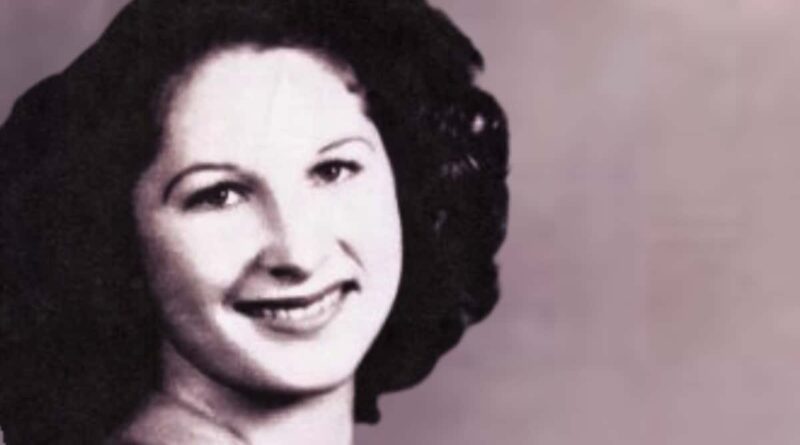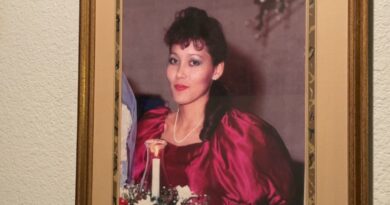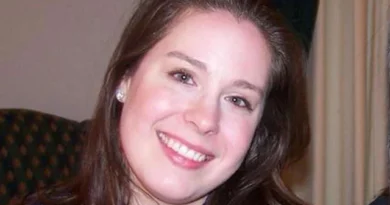Darleen May Fitchett Unsolved Murder in Des Moines Iowa
On a cold January night in 1960 a young mother of three was living an ordinary life in a modest home on the east side of Des Moines. Her name was Darleen May Boyd Fitchett. She was twenty eight years old, known to neighbors and relatives, and she was managing the demands of parenthood while facing health challenges that required daily medication. On January 19, 1960 the routine stopped. By the next day the family could not reach her. By the next weeks the police were searching. In the years that followed the missing person file evolved into an unsolved homicide case. No remains were found, but the absence of evidence did not erase the strong indications that a crime had occurred. The story remains one of Iowa most stubborn mysteries.
The woman at the center of the case
To understand the weight of the case it helps to picture Darleen as more than a date and a file number. She was a daughter, a wife, and a mother whose health had grown fragile due to thyroid disease. Friends and relatives described her as attentive to her children and consistent in her routines. She did not casually leave her home. She relied on glasses to see and on medication to function. These details matter because they shape the assessment of what happened. A person who depends on daily medication and who does not have it with her is unlikely to have planned a voluntary long absence. A person who needs her glasses and leaves them behind is unlikely to have walked away into an Iowa winter night. The character of the missing person often becomes the first piece of evidence.
The household and the neighborhood
The house sat in the six hundred block of East Pleasant View Drive. The neighborhood in 1960 was a grid of modest homes, garages, and bare winter trees. Sidewalks connected small front yards. Neighbors noticed each other without intruding. The setting is important because it defines the range of possible movements. A person could go out to the driveway and be seen by a neighbor across the street. A car arriving late might be heard through thin winter air. Snow or frost can hold tracks for a few hours if the temperature cooperates. Police who canvassed later would have been working with the memory of what was seen or heard on a Tuesday night in the heart of winter.
The last day that can be fixed with confidence
January 19 began like other days in a family that was juggling health care, errands, and the needs of children. There is no single dramatic event that marks the moment of disappearance. What can be fixed is this. After the evening of January 19, no confirmed contact with Darleen was recorded. She did not show up for obligations. She did not reach for her medication. She did not make or receive calls that could be verified. She did not take her glasses. These are small indicators taken alone. Together they are heavy. They tell investigators that the break in routine was sudden and likely involuntary.
The first signs that something was wrong
Families know the rhythms of loved ones. When calls go unanswered and when a morning routine does not begin, concern turns to fear. Relatives checked the residence and discovered that personal items that should have traveled with Darleen had not moved. The medication that kept her condition under control remained in the house. Her glasses were still there. The details of that initial walkthrough entered the notes that would frame the case. The absence of obvious signs of forced entry is often noted in such files. That absence does not rule out a crime. It only shapes which scenarios are more likely.
From missing person to presumed homicide
In the first days the file would have been coded as a missing adult. As details accumulated, the posture shifted. The reliance on medication, the lack of financial activity, the lack of credible sightings, and the presence of essential items left behind have a cumulative force. Investigators eventually reclassified the case as an unsolved homicide. That change in status reflects a judgment that the probability of voluntary flight is exceedingly low. It also reflects the reality that a person who needed daily medication would not survive long without it, especially while caring for children and managing a household. The formal change communicates to the public and to future investigators that the working assumption is foul play.
What the home revealed and what it did not
The residence provided both clues and frustrations. There were no dramatic signs of struggle noted in public retellings. There were no reports of a forced door or a shattered window that would anchor a timeline with certainty. There was the silence of a home that had been in use and then suddenly was not. Kitchens set a clock by the rhythm of meals. Bedrooms carry the imprint of nightly routine. Investigators looking back try to answer small practical questions. Was there a coat missing from a hook. Were winter shoes out of place. Did a purse sit on a table. Were there dishes in the sink that suggested an interruption. In 1960 the forensic toolkit available to a police department was limited when compared to modern methods. Latent prints could be lifted, but surface preservation and processing standards were different. Trace collection for later DNA analysis did not exist.
The influence of health and dependency on the working theory
Thyroid disease shaped every inference in the file. A person who needs a hormone replacement cannot simply skip doses for days and remain well. An individual who struggles without glasses cannot manage everyday tasks easily without them. These realities left investigators with a hard conclusion. If Darleen had the capacity to choose, she would have taken her medicine and her glasses and she would have contacted someone by the next day. The lack of both the items and the contact pointed away from a voluntary departure and toward an abrupt and violent event that interrupted life in the home or just outside it.
The role of interviews and the layers of memory
Cases like this are built from interviews. Family members are interviewed first, then friends, then neighbors, then anyone known to have interacted with the household in the days before the disappearance. In 1960 interviews relied on memory unassisted by the digital trails that modern life leaves everywhere. No cellular records. No home security cameras. No automatic transaction logs tied to cards. The reliability of memory is a known problem. People remember what they expect to have seen as often as what they actually saw. The best investigators work by triangulating accounts and by returning to the same witnesses after time has passed to see what details remain stable.
How a case ages and how it can open again
As years passed, the file did not close. A case like this does not have the luxury of closure without resolution. Periodically the police or the county attorney would revisit the material, check new tips, and compare what they had with developing techniques. Communities that keep a memory alive create the conditions for new information to surface. There was renewed attention in later decades and there were physical searches that responded to tips. One of the most notable events in that cycle was an excavation at the former family home many years after the disappearance. It did not locate remains. Even so it served an investigative purpose. It tested a persistent rumor with a definitive method. Negative results are still results. They narrow possibilities and allow investigators to focus elsewhere.
The culture of rumor and the discipline of evidence
Long running cases attract stories. Some stories come from honest attempts to make sense of what the teller cannot accept. Some stories come from anger or grief that looks for a target. Responsible reporting and responsible investigation treat these stories with care. They are noted. They are tested where possible. They are not presented as fact without corroboration. In the absence of a body and in the absence of a confession, the only safe ground is what can be verified. Darleen depended on medication. Darleen glasses remained in the home. Darleen contact with the world ended on or about January 19, 1960. These are the stones that can bear weight.
Forensics then and forensics now
The gap between what a police department could do in 1960 and what can be done today is wide. Modern laboratories can obtain DNA profiles from items that would have seemed barren in that era. Soil sampling and micro trace analysis can answer questions about whether an area was disturbed even decades earlier. Digital mapping can model lines of sight and possible vehicle routes in the neighborhood. Cold case teams can combine these capabilities with renewed interviews and can sometimes split the difference between rumor and fact with science. If any items from the home or from later searches were preserved under stable conditions, there is a chance that they can still speak.
The human cost that lingers
Every unsolved homicide is a permanent wound for a family. Children grow up with questions that no one can answer. Parents and siblings age while carrying a promise to speak a name and to refuse to allow it to fade. Communities feel the cost in quieter ways. A cold case is a reminder that safety is never absolute and that justice delayed is not the same as justice denied. Each anniversary arrives with the dual pain of memory and uncertainty. Public attention can wane. The duty of a community is to resist that drift and to continue to support efforts that might yet produce an answer.
Theories and the discipline to test them
Several theories exist that attempt to explain the disappearance and presumed murder of Darleen May Boyd Fitchett. One theory focuses on an act that occurred inside the home in the evening of January 19. Another theory imagines a late night arrival by someone known to the family and a quiet departure that hid a crime. A third theory pushes the event just outside the home near a vehicle or a garage. None of these theories can move from possibility to fact without evidence that connects a place, a time, and an act. The task of investigators is to keep testing these ideas against whatever physical or testimonial material remains.
What could still move the case forward
Cold cases resolve for two broad reasons. Either science finally extracts meaning from old material or a person decides to speak. Often the two work together. A lab result narrows the suspect field. A narrowed field alters the calculations of someone who has kept silent. A renewed canvass combined with public outreach can produce a tip that had seemed improbable. A small memory can become a hinge when paired with the right scientific finding. For a case from 1960 even one definitive result would shift the entire landscape.
Why this story endures
The murder of Darleen May Boyd Fitchett is not only a Des Moines story. It is a human story that stands for every unresolved absence that haunts a family table. It is also a practical story about a city that has grown and changed while carrying the responsibility to its past. Cold case work is not romantic. It is patient. It requires respect for the people who came before and humility in the face of what is not known. It asks the living to trade rumor for the rigor of careful statements and to trade fear for the quiet courage of telling the truth.
Closing reflection
On a January night a woman who needed glasses and medication to navigate her day vanished from an ordinary home. She left behind the tools that made daily life possible. She left behind children who expected her to be there in the morning. The file that began as a missing person report became an unsolved homicide because the facts demanded that conclusion. There is no body and there has been no confession. What there is, is a set of stubborn facts and the knowledge that someone knows more than they have said. If that person comes forward, a family will receive the dignity of an answer and a city will be able to say that its memory was long enough and its patience deep enough to carry justice across 65 winters.
Discover more from City Towner
Subscribe to get the latest posts sent to your email.



